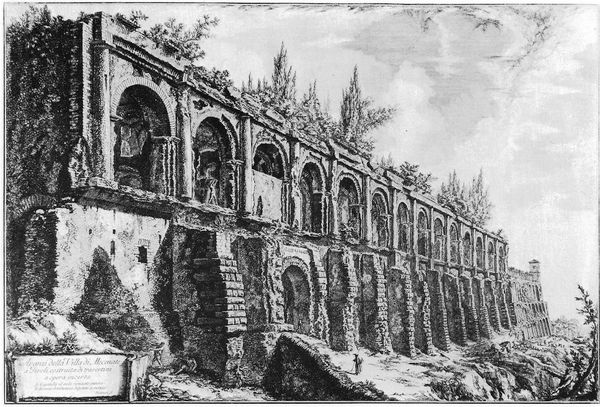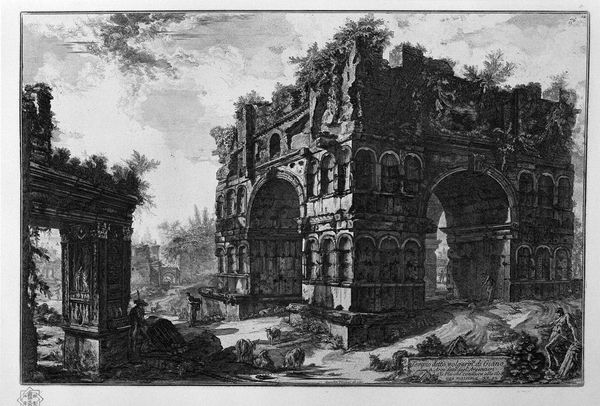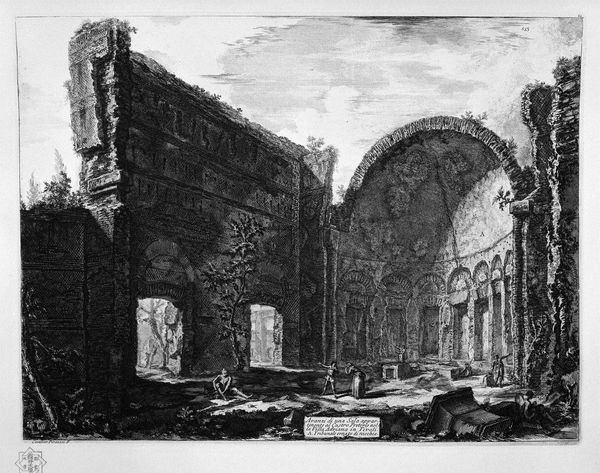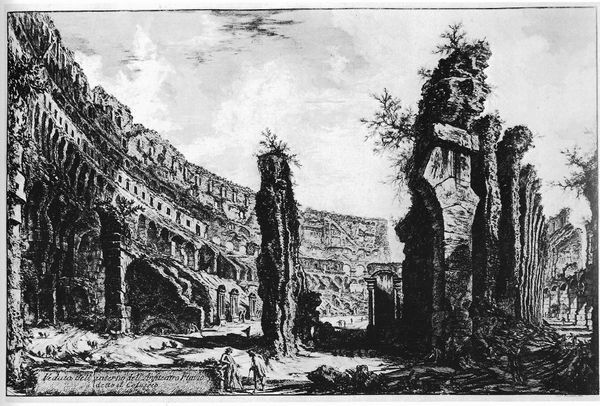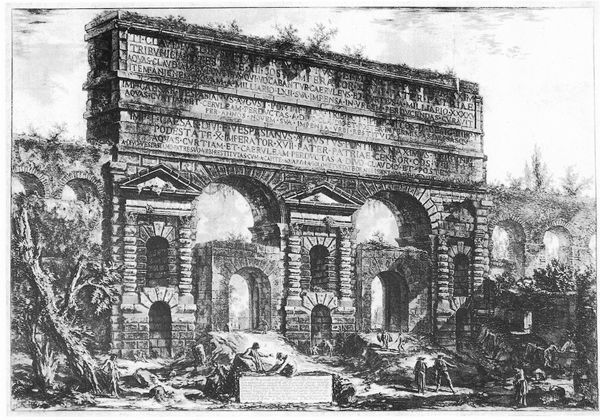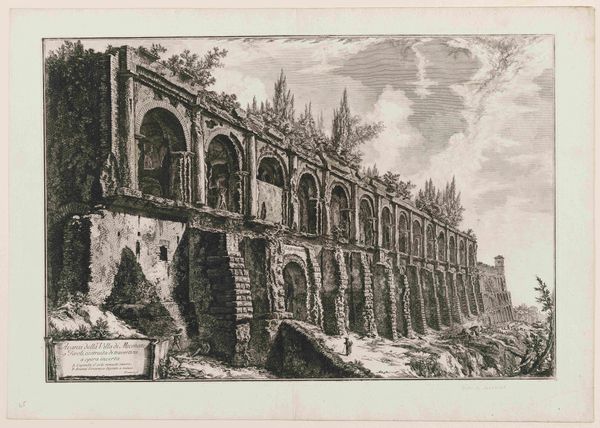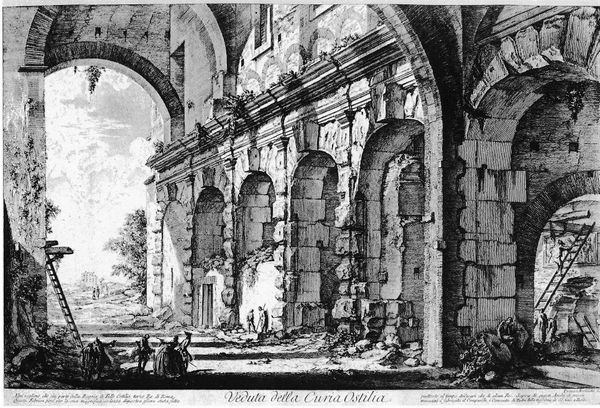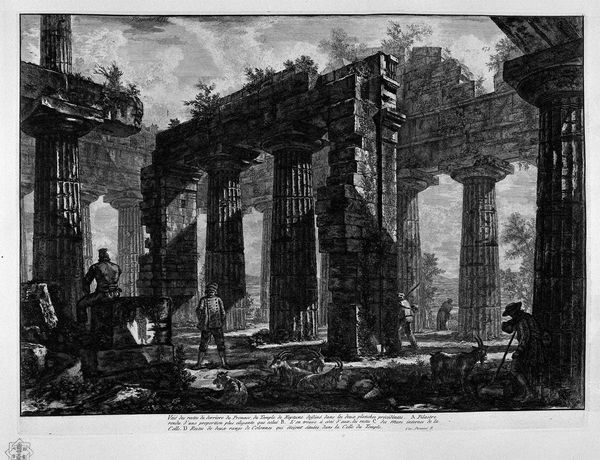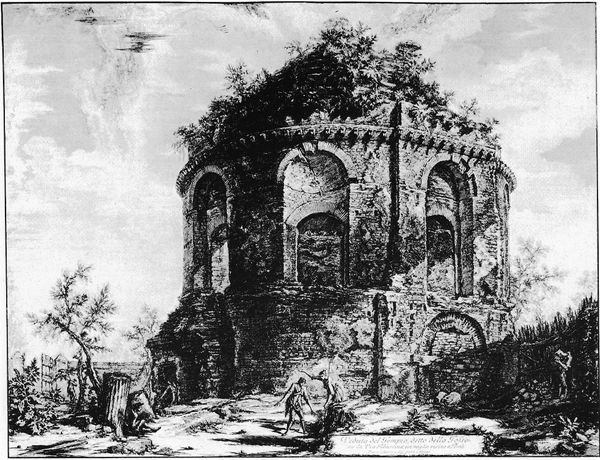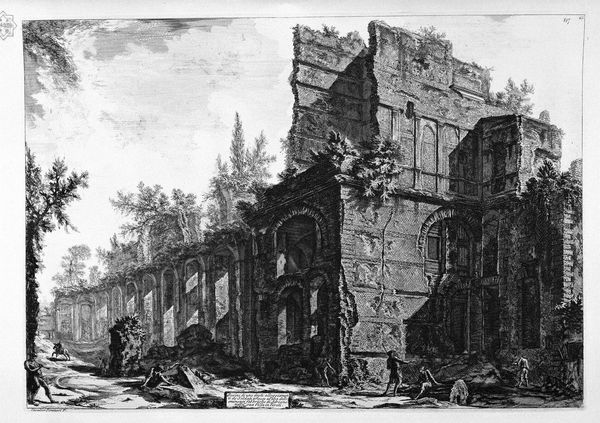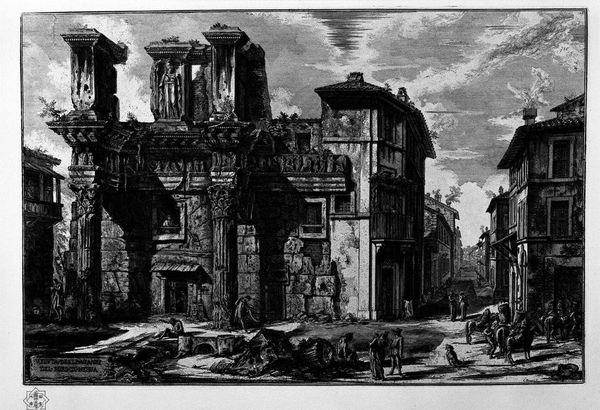
print, etching, engraving, architecture
# print
#
etching
#
landscape
#
perspective
#
form
#
romanesque
#
ancient-mediterranean
#
column
#
line
#
cityscape
#
history-painting
#
engraving
#
architecture
Copyright: Public domain
Editor: We are looking at Giovanni Battista Piranesi’s etching, "Remains of the Villa of Maecenas at Tivoli." It is just such a dramatic, overgrown cityscape rendered in incredible detail. How do you interpret this work? Curator: This work presents a fascinating intersection between power, decay, and the gaze of the artist. Consider the ruins: they’re not just aesthetic objects but tangible evidence of collapsed power structures. Piranesi wasn't simply documenting; he was engaging with the fraught politics of archaeological excavation and the Grand Tour, which often reproduced colonial dynamics. Editor: Colonial dynamics, even with Roman ruins? Curator: Absolutely. The act of rediscovering and possessing these "origins of Western civilization" had significant implications for contemporary European identity and its relationship to the rest of the world. These picturesque scenes reinforced a narrative of European cultural superiority predicated on the appropriation of other cultures’ history. Editor: I never thought about it like that! The lone figure walking through the ruins almost seems to be claiming ownership just by being present. Curator: Exactly. The ruin becomes a stage upon which contemporary power dynamics are reenacted. What do you make of the scale and the detail? Editor: The detail feels almost overwhelming, like an attempt to capture every crack and crevice, and the scale does hint at the sheer imposing presence of the past bearing down on us. Curator: The print captures the grandeur of a decaying empire but it also makes you question who benefits from this vision of the past and what contemporary agendas might be at play. A vital point to keep in mind. Editor: That adds such a valuable layer to viewing Piranesi’s work! Thanks.
Comments
No comments
Be the first to comment and join the conversation on the ultimate creative platform.
